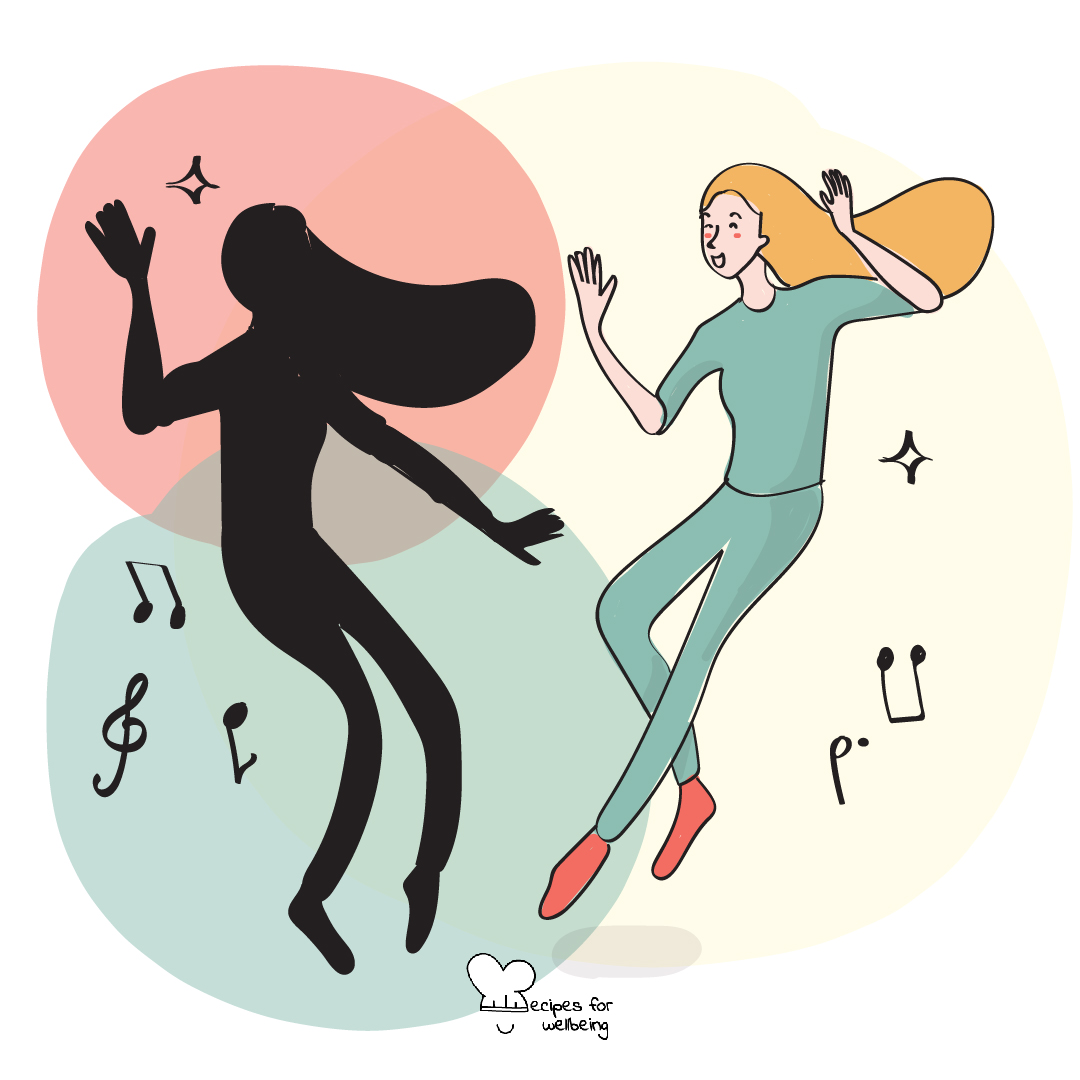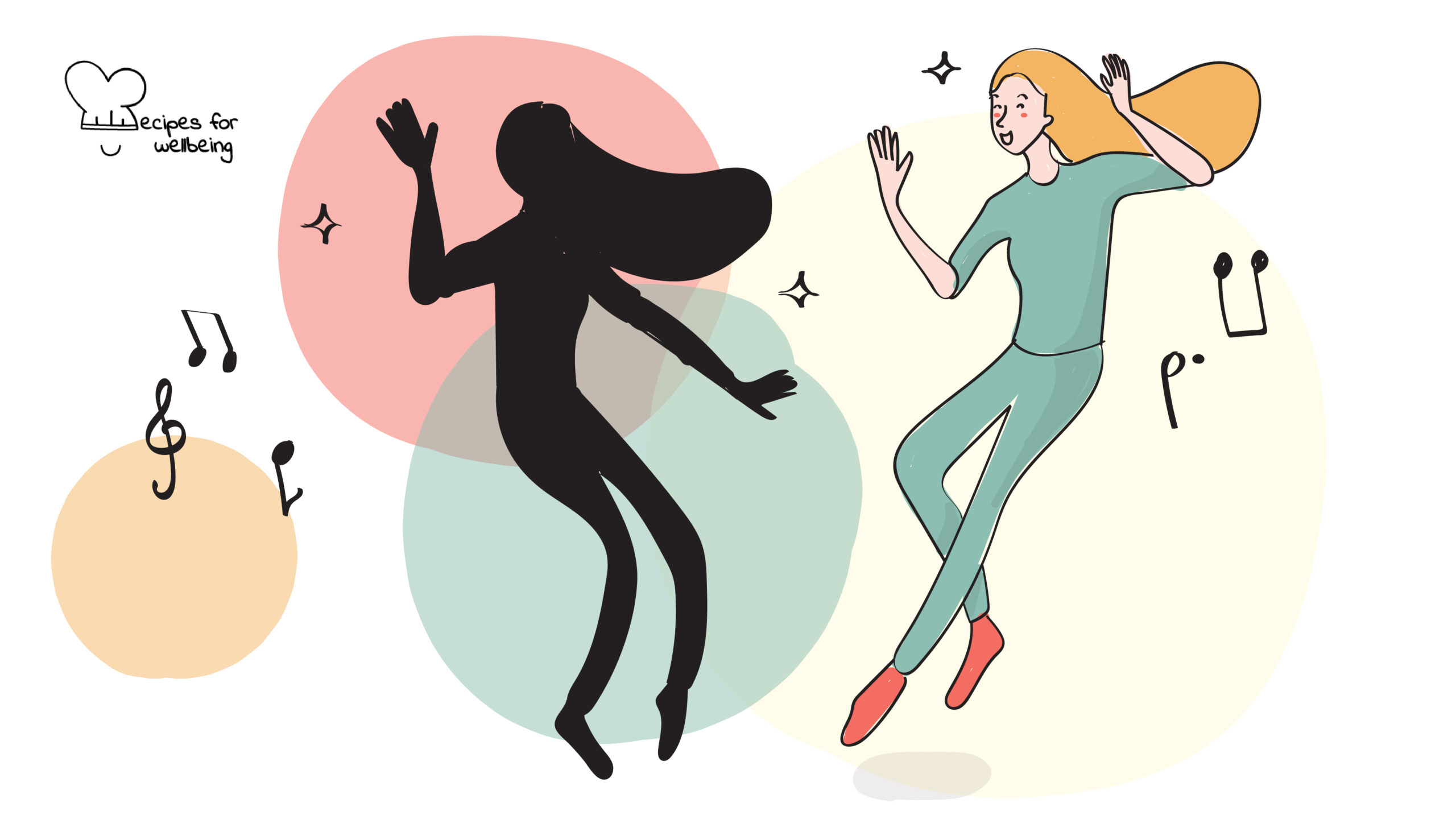
Dance with your shadow self
Until you make the unconscious conscious, it will direct your life and you will call it fate. —Carl Jung
👥 Serves: 1 person
🎚 Difficulty: Medium
⏳ Total time: Ongoing
🥣 Ingredients: A quiet place with no distractions, speaker, music
🤓 Wholebeing Domains: Awareness, Discomfortability, Liberatory Learning
💪 Wholebeing Skills: Acceptance, Embodiment, Liberation, Movement, Non-judgement, Self-awareness, Self-directed learning, Vulnera-bravery

Dance with your shadow self
📝 Description
A movement meditation that helps to recognise your shadow self.
Influential 20th-century psychologist Carl Jung coined the notion of “shadow self”. Shadow self refers to the unconscious and lost parts of our personality that we have nestled deep in the subconscious due to shame and pride. Our shadow sides are our darker and more undesirable traits.
What are dark and undesirable traits? From a young age, society, our community, and our parents teach us to be gentle, patient, compassionate, grateful, and pleasant. When we experience feelings that go against these traits, it makes us human, but it fights social expectations so we suppress them. All humans go through this. We push it deeply away and judge ourselves – but what if, rather than judge, we learned to accept these parts of our shadow, welcome them gently and patiently, as we would with a dear friend or with a young child?
By understanding your shadow selves, it can help you improve your relationships with others, have mental clarity, more energy, better sleep, maturity and self-awareness, and creativity. If you are interested in a collective experience to explore your shadow self, check out our recipe “Meeting your shadow”.
IMPORTANT NOTE: If you are experiencing a period of difficulty/challenges in your life, great stress, or depression, it might be best to shelf this exercise until a time you are confident that you can take on the challenges of accepting your shadow self. The goal is never to “remove” the shadow, but to live with and accept your shadow selves. Note that while it’s emotional and uncomfortable, it is not a dangerous process.
This recipe has been inspired by the homeplay offered during The Wellbeing Project’s Wellbinar “Looking Inward: Embracing Our Shadow Selves” with Sharon Salzberg, Parker J. Palmer, and Dr Dan Siegel on 13 April 2021. It has been adapted by our wellbeing content writer collaborator Marissa Del Mistro.
👣 Steps
Step 1 – Prepare a movement meditation
Movement meditation is a creative approach to meditation. Rather than sitting still, you will be moving, almost dancing, through different positions. However, similar to sitting meditation, there is no one right way to experience movement meditation – there’s no one position, breath, thought, or correct movement.
Start by setting the intention of accepting, hearing, and working through the shadow self. Know that meditation is a space for yourself, without judgement. Ask yourself:
- What trait or characteristics in others do you wish you had?
- When was the last time you forgave yourself?
- When is a time you felt very rejected? What negative emotions do you avoid and why?
Step 2 – Play music to move to
Play music that speaks to you – something that is soft, relaxing or classical instrumental music such as Nocturne no.9 by Frèdèric Chopin. The music you select can be anything that brings you peace, and still give your mind space to think and reflect.
Step 3 – Move to the music
Dance with your shadow self, as you uncover the hidden truths surfacing. There is no right way to move – you can start by putting your hand on your heart and feel your breathing. Roll your neck, arms, hips. You could try reaching for something as you raise your toes and elongate your hands and arm. Be free, dance slowly, rhythmically, or move fast and rapidly as you listen, being mindful of your body and the feelings that come up as you move. Daily or regular movement meditation practice has been proven to awaken the shadow self through acceptance, quiet the mind, and allow your authentic self to flourish.

